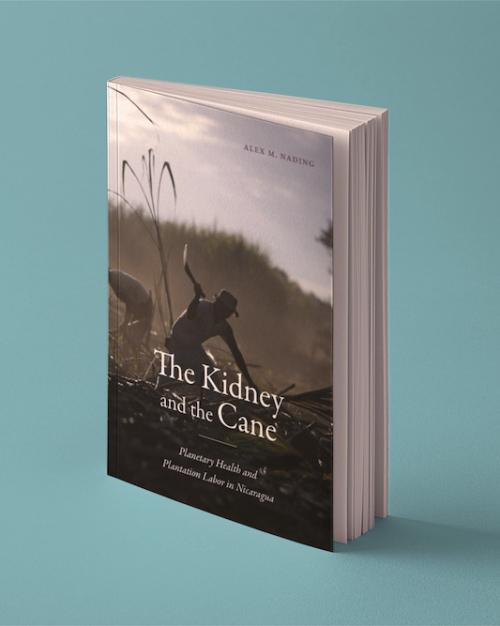In Nicaragua, two things have been growing at accelerated rates in recent decades: sugarcane production and an epidemic of chronic kidney disease of nontraditional causes (CKDnt) among plantation workers.
Unknown before the late 1990s, CKDnt is now understood to be a consequence of global climate change, and people with the disease in Nicaragua’s booming sugarcane zone are being portrayed as bellwethers for a global climate crisis. But there’s more to it than that, anthropologist Alex M. Nading argues in a new book.
“What is happening to the kidneys of sugarcane workers is not a result of climate change. It is climate change,” Nading, associate professor of anthropology in the College of Arts and Sciences, writes in “The Kidney and the Cane: Planetary Health and Plantation Labor in Nicaragua.”
In the book, Nading follows activists, scientists and residents in the sugarcane zone, documenting how environmental justice activists are addressing the kidney disease epidemic. The complex picture that emerges from his ethnographic research critiques the “planetary health” conceit and offers what he calls “a glimpse of what the goings-on in individual bodies might tell us about planetary-scale change.”
The College of Arts and Sciences spoke with Nading about the book.
Question: What is the flaw in the claim that climate change causes human disease?
Answer: These are not two separate things. Our bodies are not sealed off from the environment. We are composed of millions of microbes that aid in digestion, fight infection and regulate a host of other supposedly human functions. We all contain traces of heavy metals, microplastics and PFAS in our blood and tissues. In Ithaca, New York, we breathe in particulate matter from burning forests in Canada. So our bodies are part of the changing climate, not victims of it.
Q: How does the CKDnt epidemic in Nicaragua reveal limits of or even problems with the planetary health movement?
A: What I hope the book shows is that planetary health is more of a question than a set of fixed practices or principles. Planetary[LG2] health is such a new field that even many CKDnt researchers would probably not necessarily see their work aligned with it. In a way, the book was an attempt to make a friendly critique of planetary health by taking its central conceit – that climate change (broadly conceived) and human health cannot be separated from one another – to its fullest logical conclusion. To me, this means both asking how a disease like CKDnt becomes possible and how solutions to it can, if we are not careful, excuse some of the very practices that did make it possible.
In the case of Nicaragua, solutions to CKDnt are really about preventing injury, not addressing the possibility – which is strongly evidenced in historical and environmental research – that no form of sugarcane plantation labor is healthy, and that no form of industrial sugar production is likely to be ecologically or socially sustainable. At a fundamental level, I don’t think that plantation-grown sugar is compatible with any form of medicine that also claims to be serious about addressing the climate crisis.
The irony in the case of CKDnt is that the sugarcane industry in Nicaragua expanded in part because lenders and government leaders bought into the claim that the production of sugarcane for biofuel would mitigate the climate crisis by reducing dependence on fossil fuels.
Q: What does the story of the organization AMBED offer to planetary health?
A: AMBED was formed by people who were former employees of the Montelimar sugar corporation. These workers or their family members were all affected by CKDnt.
Grassroots movements to address the combined social, medical and ecological effects of industrialization do exist. Grassroots action was essential to getting the world’s attention about the AIDS pandemic, maternal and child health disparities, and other global health issues, yet the story of how the world began to address these problems sometimes tends to make well-connected, well-educated people, largely from the Global North, into the protagonists. AMBED is an example of a creative, if not always harmonious, effort to hold corporations and states to account for a number of related issues.
AMBED’s big achievement, in my view, was to insist that problems like CKDnt, land tenure, and water and soil pollution were connected to one another. Even many well-meaning folks in the corporate, government, and NGO world wanted to try to keep those things separate. Q: Why do you think it’s important to tell the story of the kidney and the cane from an anthropological point of view?
In my view, the job of an anthropologist is to go beyond simply documenting harm to ask how things got to be the way they are, and what big problems, such as epidemics, climate change or deforestation, mean to people who are living through them. The goal of anthropological writing, especially in books, is to try to reflect the complexity of social situations, rather than reduce them to good versus evil, or cost versus benefit. This is why readers often find what we do frustrating. But life is frustrating, so if you are frustrated, then I am in some sense doing a good job.





